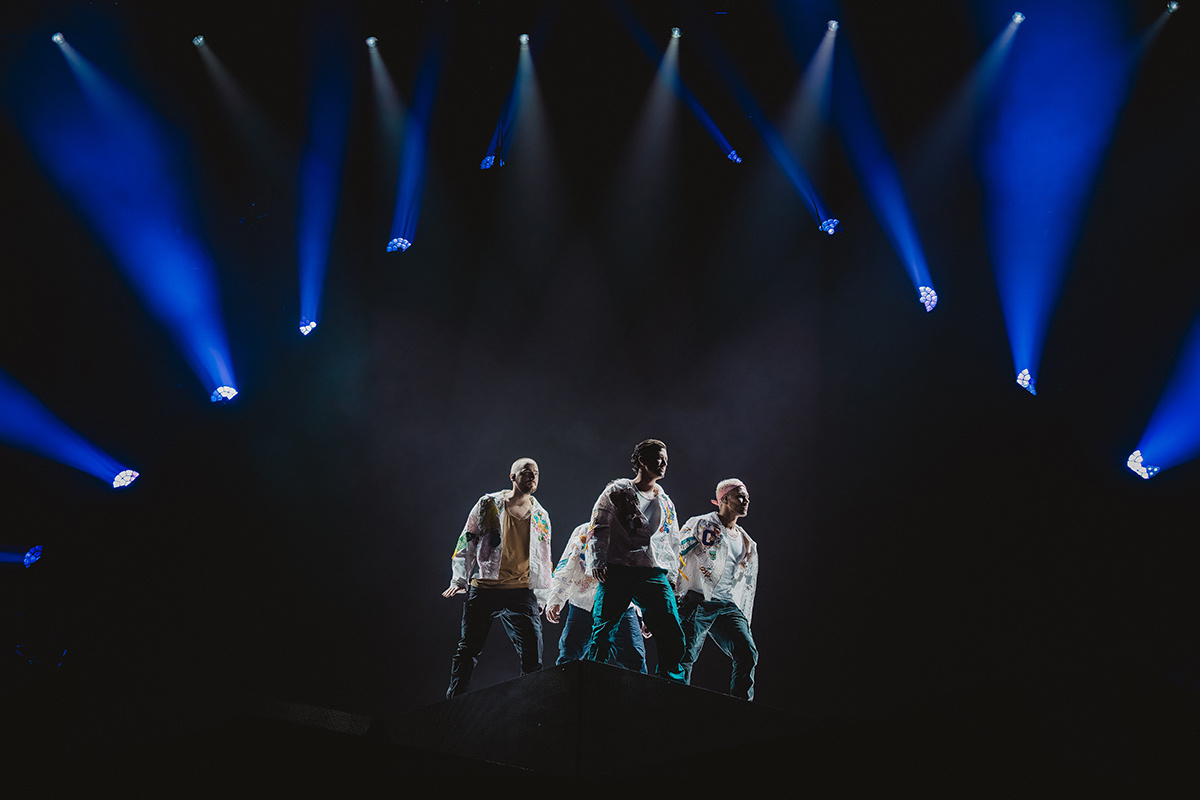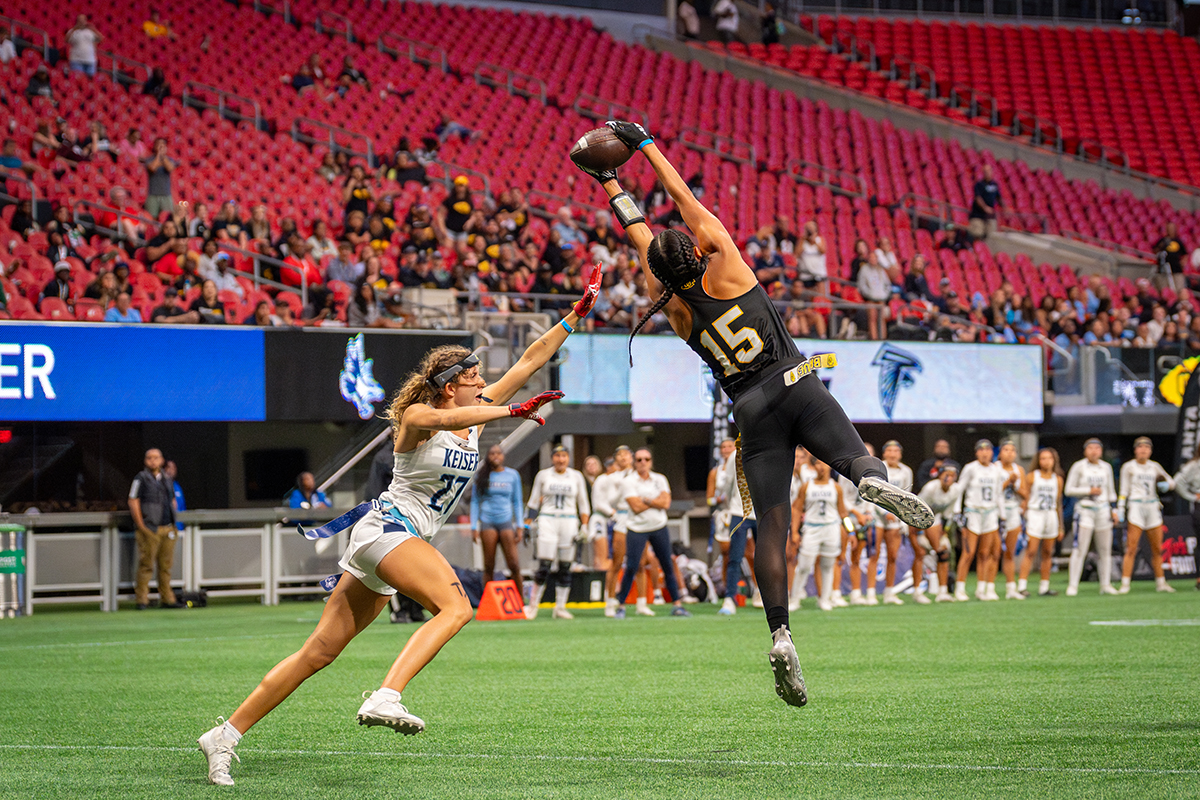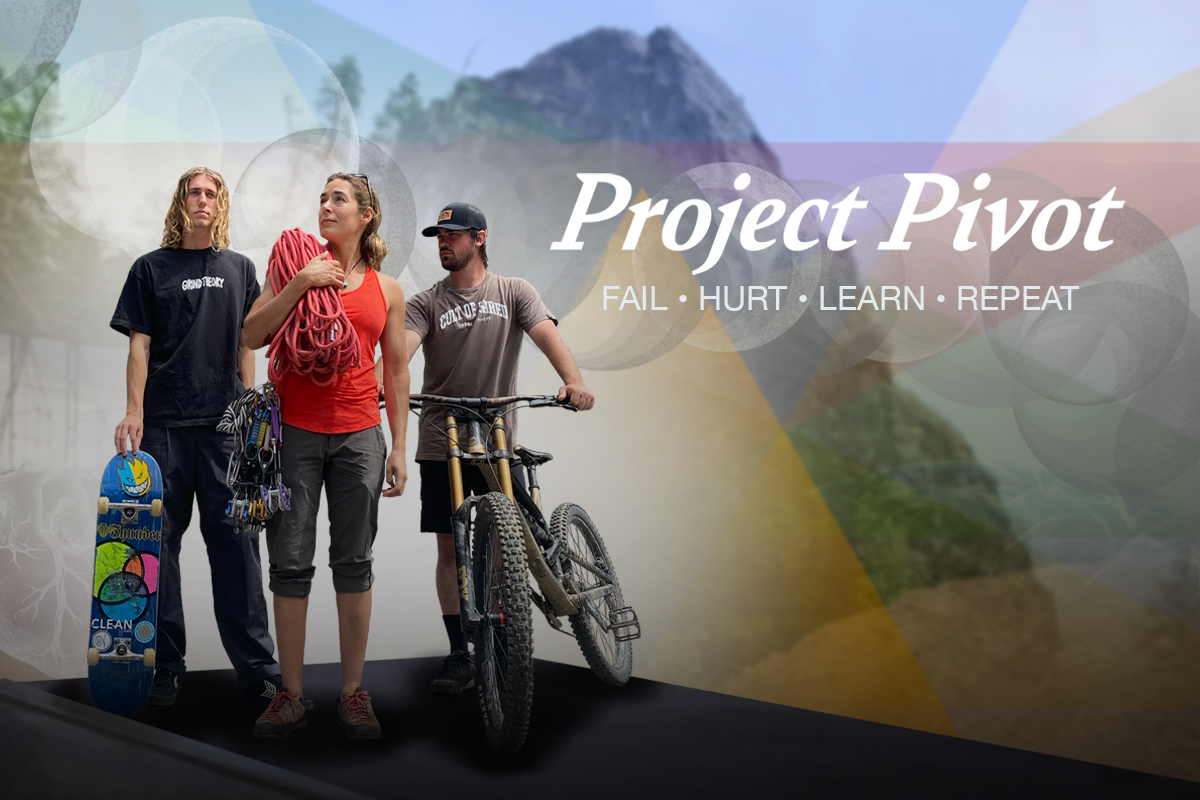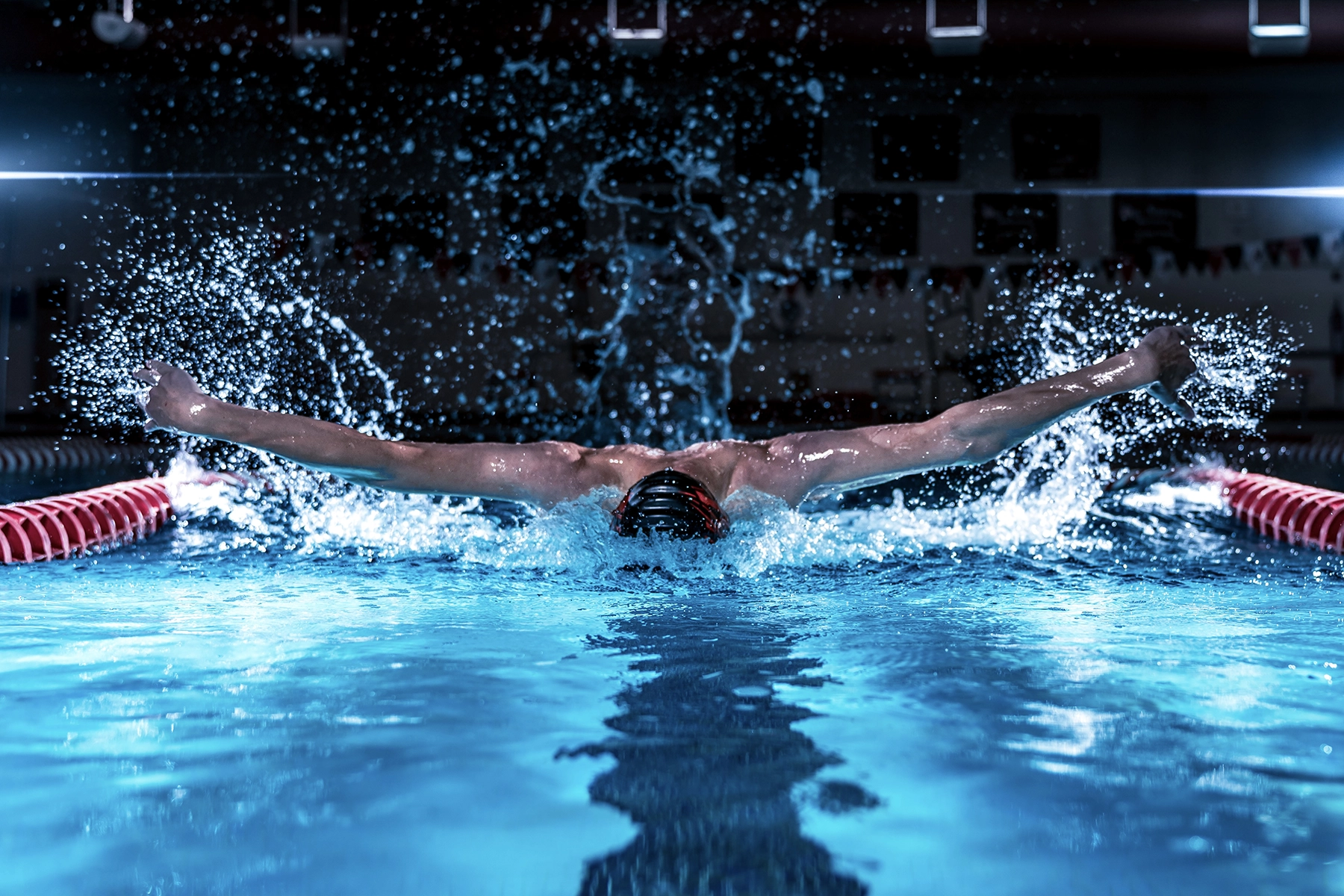
Friday Night Lights
Boone Cumberland uses a triangulated lighting approach to dramatic senior sports portraits with his Tamron 28-75mm F2.8 G2 and 70-180mm F2.8 VC G2 lenses.
Author: Jenn Gidman
Images: Boone Cumberland
Share Article
Boone Cumberland uses a triangulated lighting approach to dramatic senior sports portraits with his Tamron 28-75mm F2.8 G2 and 70-180mm F2.8 VC G2 lenses.
William “Boone” Cumberland didn’t set out to be a photographer. In fact, photography wasn’t even on his radar until about four years ago, when he picked up a camera to shoot promo images for his rock band. A longtime guitarist and songwriter, Boone had always seen the world through an artistic lens. When he started taking pictures with a Sony mirrorless camera, however, “everything literally clicked.”
Today, Boone has carved out a name for himself in the Kansas City, Missouri, area for his bold, dramatic senior sports portraits, with a signature style of low angles, hero poses, and saturated colors. “I want my subjects to feel larger than life,” he says. “I’m always on my knees to capture those epic poses.”

To photograph his senior athletes, Boone swears by his Tamron 28-75mm F/2.8 Di III VXD G2 standard zoom and 70-180mm F/2.8 Di III VC VXD G2 lenses. “I’ve used Tamron for years,” he explains. “The 28-75mm F2.8, my very first Tamron lens, is on my camera 90% of the time—it’s so versatile and tack sharp, whether I’m going wide or zooming in.”
The 70-180mm, complete with Tamron’s proprietary Vibration Compensation (VC) technology, offers Boone even more flexibility. Both lenses feature a maximum F2.8 aperture for challenging lighting conditions and to emphasize compression and the “beautiful bokeh” Boone strives for. “You can see that in the photo here of the football player kneeling at sunset, which I shot at 180mm,” he says. “These lenses are fantastic for allowing me to bring my images to life.”
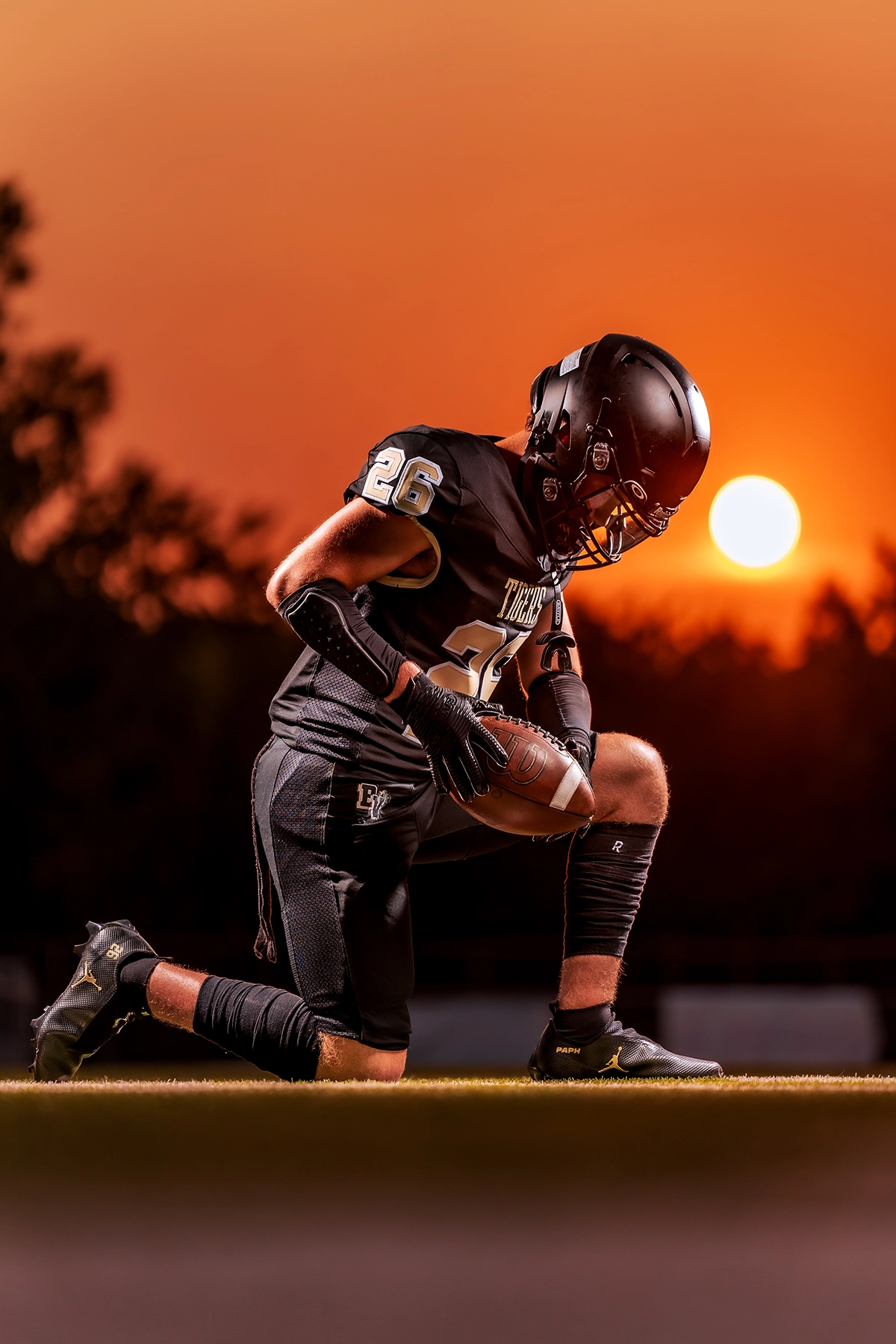
Read on to see how Boone elevates his sports portrait photography to the next level with Tamron lenses.
BOONE’S QUICK TIPS
Triangulated lighting for sports portraits.
Everywhere I go, I have two wagons full of gear, with up to eight flashes. You’ll rarely see me use just one flash. I typically use a three-light triangle formation—two rim lights and one key light. I prefer to skip using fill lights, as I like my images to look more dynamic and dramatic, with shadows on one side and accents from the rim lights.
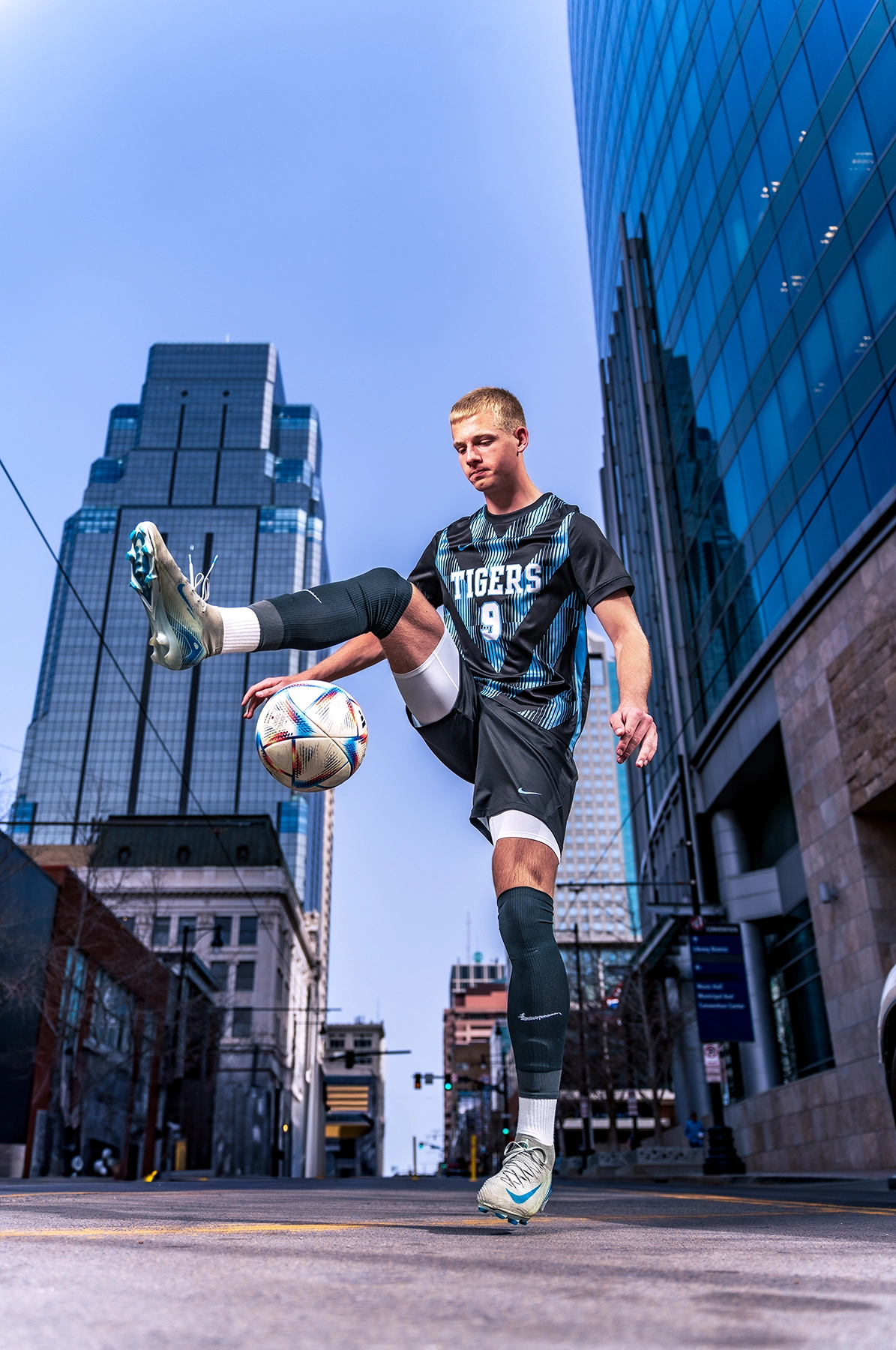
Loosening the teens up.
Getting high school athletes to relax in front of the camera starts with creating a comfortable, low-pressure environment, and that starts with a conversation. I’ve stuttered since I was a kid, but “awkward” isn’t in my vocabulary—I’m calm and collected, but not your typical professional, serious photographer. Goofing around with the kids puts them at ease, as does showing them the raw images as we shoot. When they see the images, they’re often like, “Dude, that doesn’t even need to be edited!” They’re usually so excited after seeing a couple of shots that they’re raring to go for the rest of the shoot.
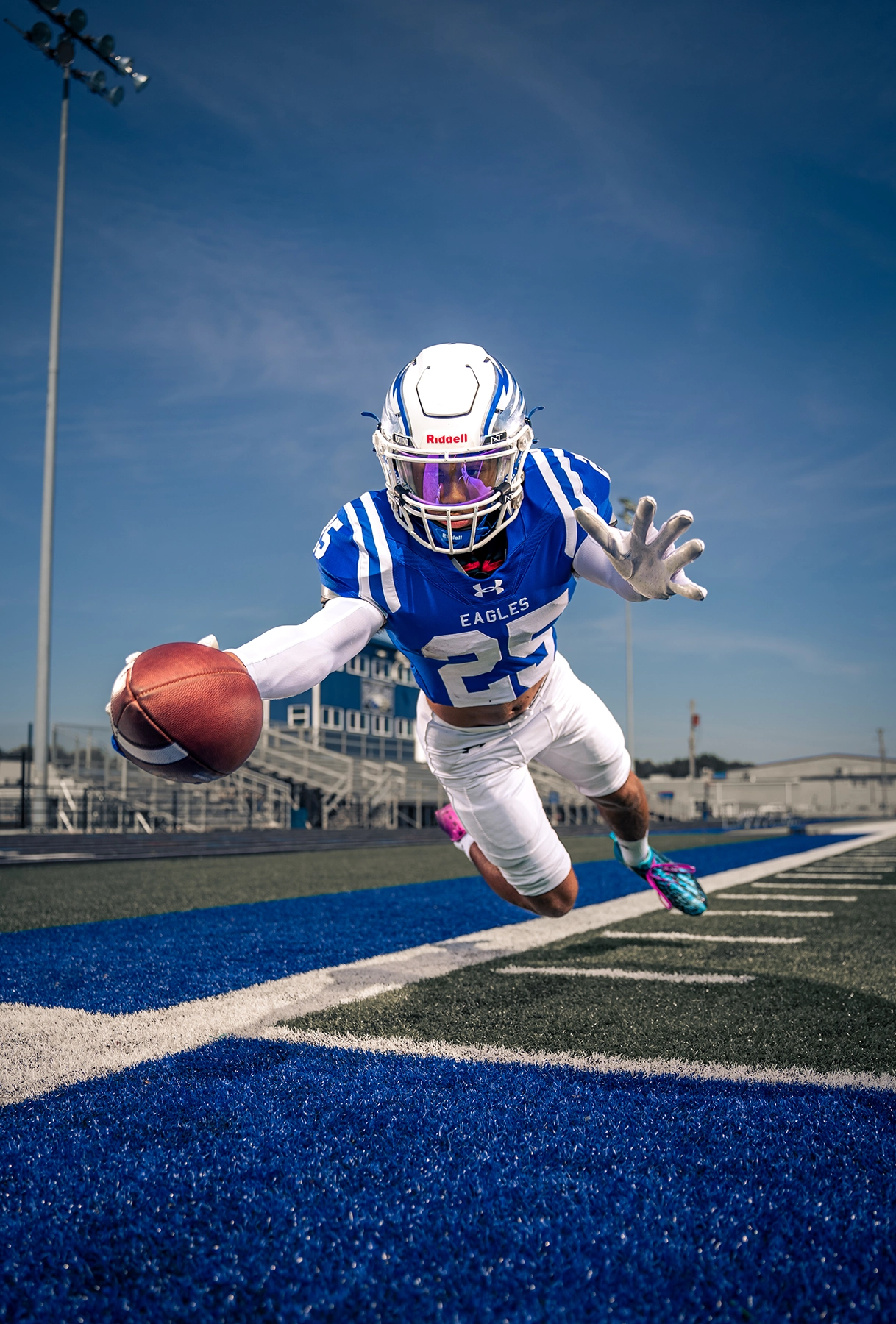
Posing perfection.
I try to avoid stiff, traditional posing that looks staged. Instead, I usually just have my subjects do what they do naturally: Warm up and run through drills in whatever sport is their specialty. I tell them, “Act like you’re practicing,” and then I build the shoot around that movement. All I ask is that they keep their action within the lighting triangle I’ve set up as I click away.
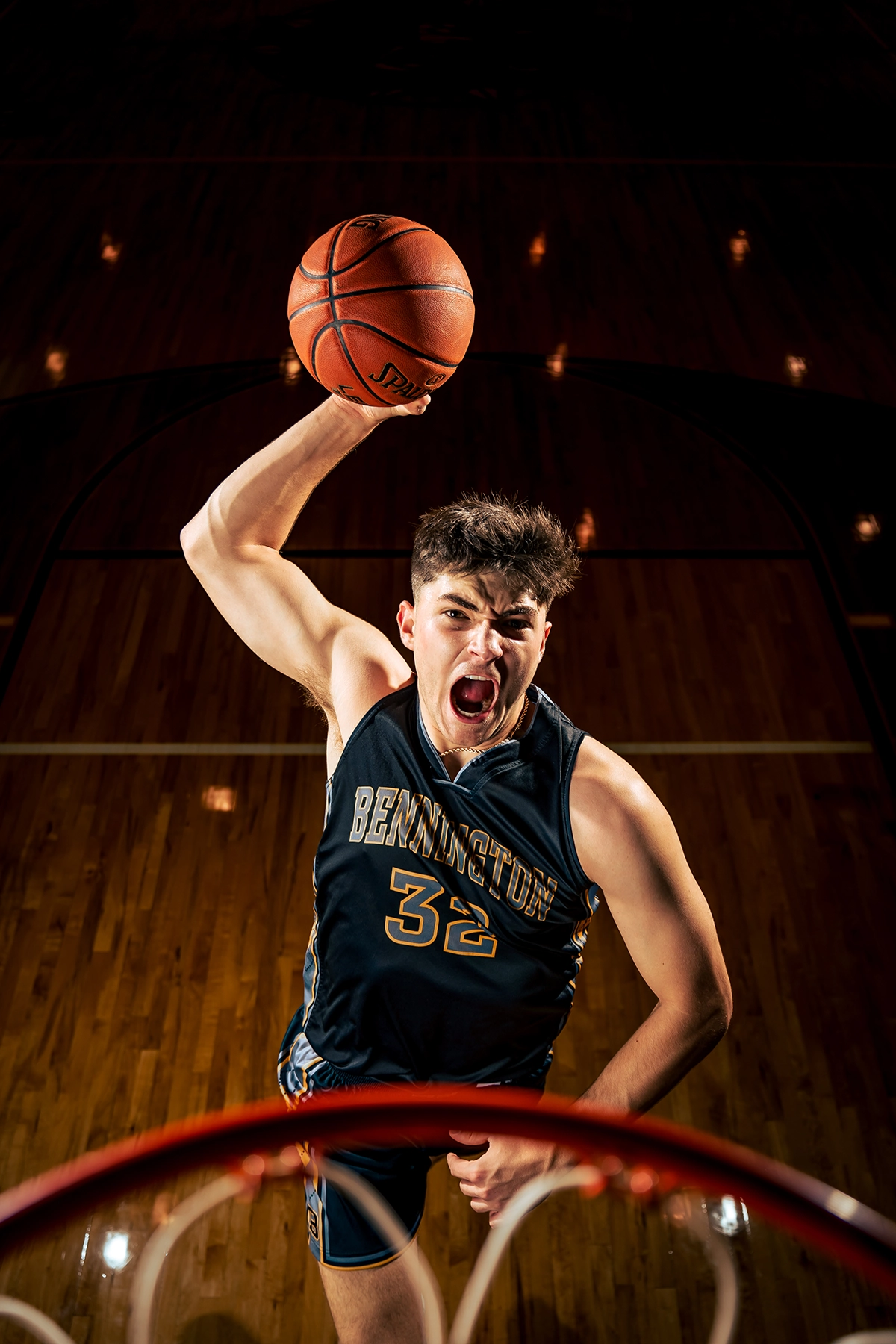
Turn up the special effects.
To take my senior sports portraits up a notch, I’ll sometimes incorporate cinematic special effects to add even more personality. Fog machines are trendy now, so I’ll use my own, sparingly but effectively, to create the right atmosphere for certain shots. I’ve got other tricks up my sleeve, too: I have a hockey image with one kid checking another kid, with blood coming out of the second kid’s mouth. That’s obviously fake blood I used.
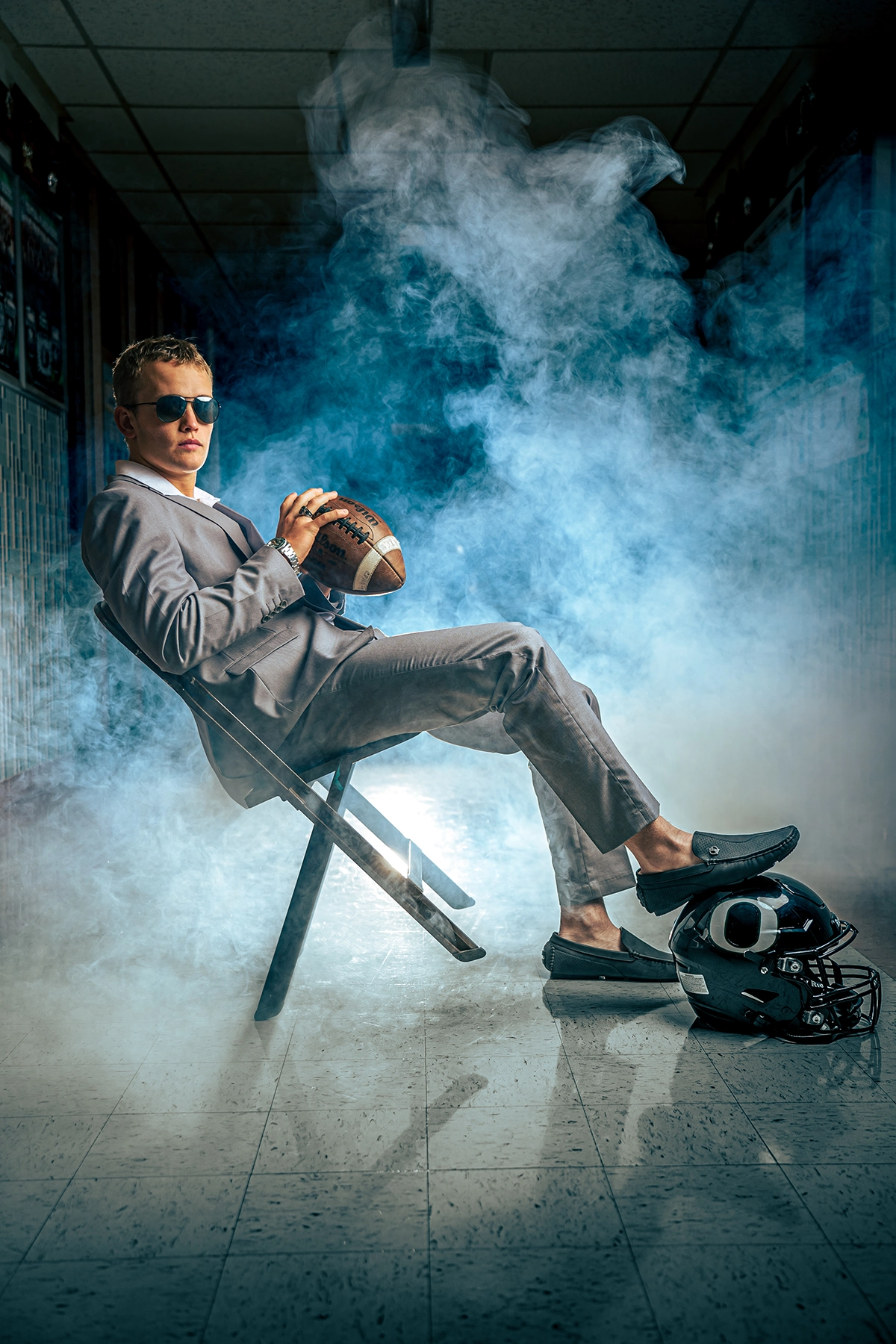
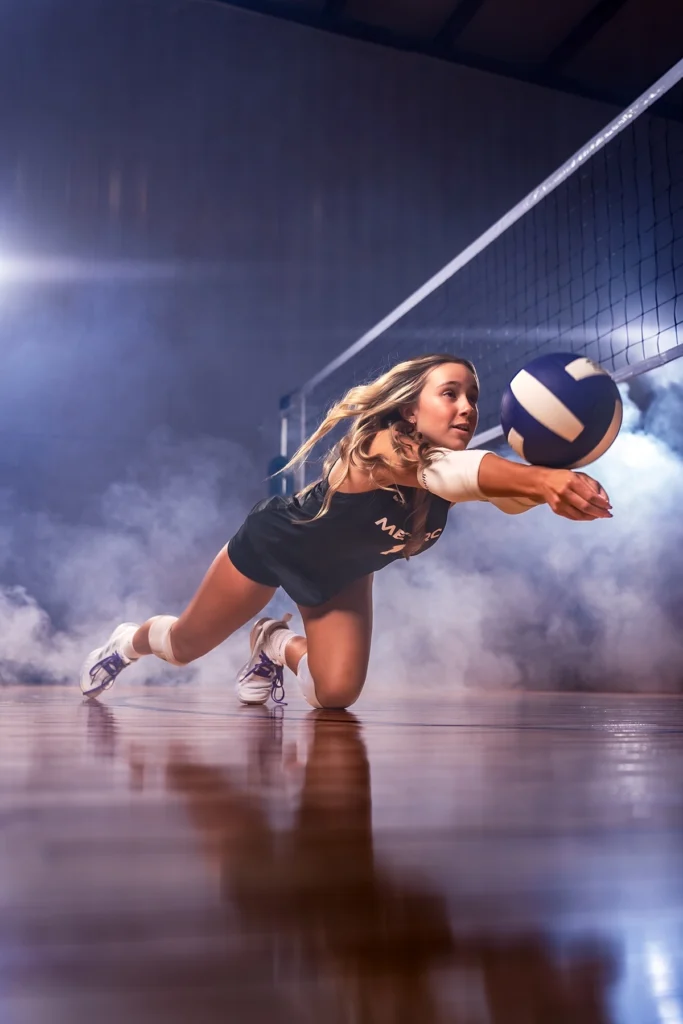
Baby powder comes in handy, too. LeBron James is famous for his signature chalk toss before games, and I’ve always thought that was pretty cool, so sometimes for baseball pics, I’ll fill a wiffle ball with baby powder, so that when the athlete hits the ball, the baby powder disperses in this very neat cloud effect. It brings some extra drama that makes the photos stand out.
Edit for maximum effect.
Everyone thinks I’m using AI to create my images, but that’s not the case. I credit my photos to my Tamron lenses. I don’t have to do much editing at all, because my images are all so sharp, though I will spend a couple of minutes applying careful color grading, tweaking color curves, and desaturating certain colors, like the greens and yellows in grass.
To see more of Boone Cumberland’s work, check out his Instagram.
